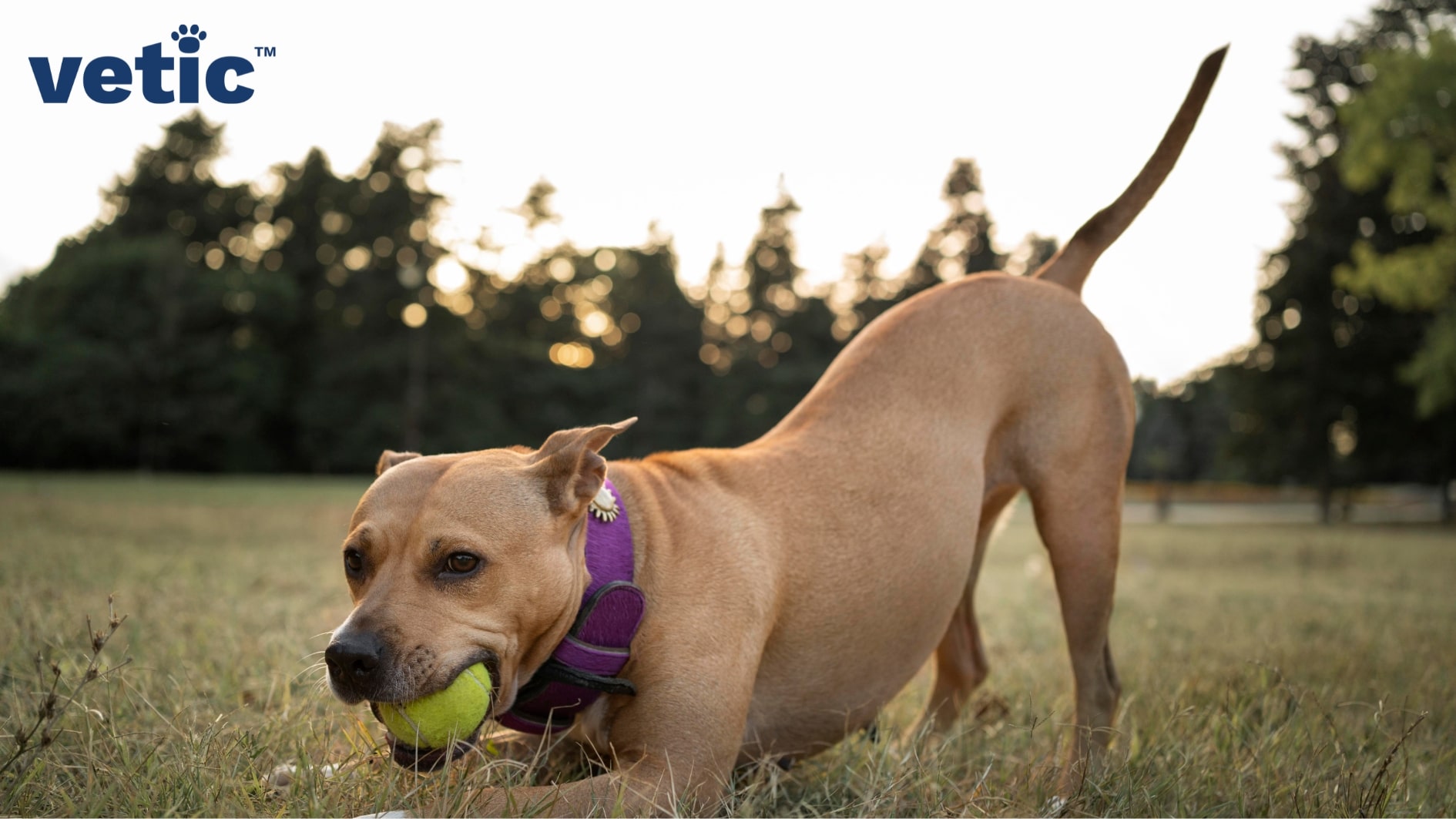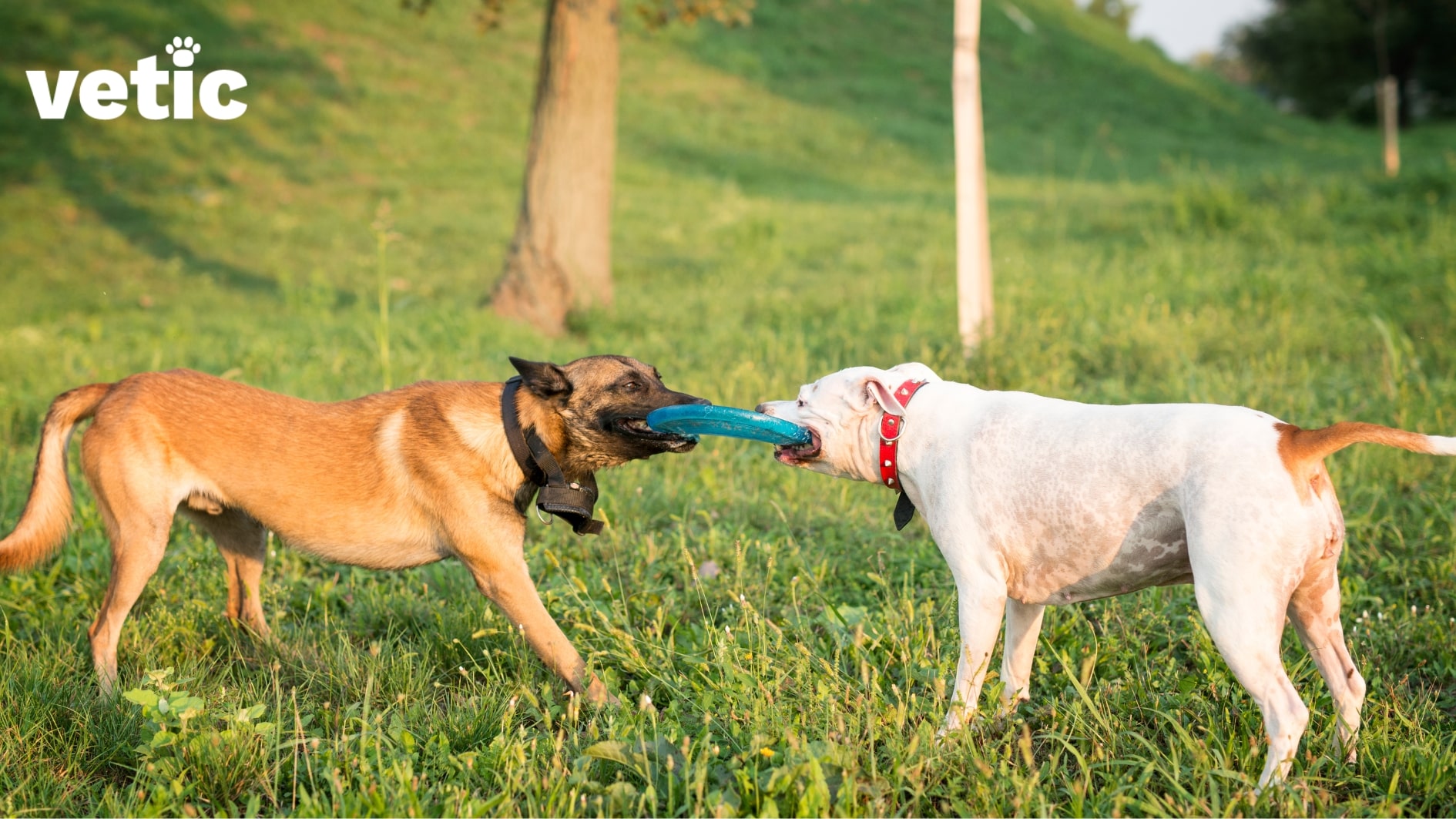Puppies are bundles of energy and it’s important to ensure you are exercising your puppy safely and correctly. Finding the right balance between puppy playtime and nap times can be challenging for new pet parents.
The answer depends on various factors, such as breed, age, and physical activity levels.
In this blog post, we will discuss the guidelines for puppy exercise so you can keep your pupper healthy and happy.
We’ll delve into considerations such as your pup’s breed and age, talk about safe playtime, and explain why vaccinations are an important aspect to consider before engaging in physical activity.
Additionally, we’ll explore signs that your pup needs more exercise and how to determine how much exercise your pup needs for its overall well-being.

How Much Exercise Should My Puppy Get?
A good rule of thumb is to give puppies five minutes of physical exercise per month of age, twice a day. Indoor and outdoor playtime, short walks, and training are recommended. Consult a vet to create an appropriate exercise plan for your furry friend.
Understanding Your Puppy’s Breed
Puppies need to get enough exercise for their overall health. However, it’s crucial not to over-exercise them.
Keep in mind that each breed has different needs for playing and exercising. Short walks, playtime, training sessions, and mental stimulation are all great ways to exercise your pup without causing any harm.
Before starting an exercise routine with your puppy, it’s always a good idea to consult a veterinarian and ensure that the amount of exercise you’re giving them is appropriate for their age and breed.
Exercising Your Puppy Safely
It’s important to remember that puppies need plenty of physical activity, but too much can be harmful. It’s a good idea to start with short walks for puppies in their early weeks and gradually increase the number of minutes as they grow older.
Puppies should not engage in high-impact activities like jumping or running on hard surfaces as it can cause damage to their growth plates.
Playing fetch with your puppy under proper supervision can be a great way to stimulate their physical and mental health.
They can run on soft ground like your garden, yard or at the park, as long as it’s not too hot.
Just make sure not to overdo it!
Vaccinations and Puppy Exercise
Puppies need plenty of physical activities to keep them healthy and mentally stimulated.

However, do not even think about taking your puppy to the dog park, pools or road unless all his vaccines are complete.
In case you are unsure about what vaccines your puppy needs, talk to Vetic pet clinic today.
Ask Your Veterinarian Before Exercising Your Puppy
Consulting the best veterinarian near you is vital when deciding how much physical activity your pup should be getting.
Over-exercising puppies can cause joint problems and other health issues, meaning that the right amount of exercise is necessary for a dog’s overall health.
At an early stage, it’s important that puppies get plenty of time to rest since playing fetch or tug-of-war could put unnecessary stress on their joints, particularly in larger breeds.
In addition to physical exercise, mental stimulation through training or playtime is also essential for a puppy’s mental health.
Signs You Aren’t Exercising Your Puppy Enough
Your precious little pup might show signs of boredom or restlessness when they require some additional physical activity and mental stimulation.
If you see your puppy chewing on furniture or shoes excessively or exhibiting bad behaviour due to excess energy, take it as a clear indication that they are not getting enough exercise.
Give them plenty of opportunities for playtime and short walks every day to maintain their overall health and well-being.
It’s always a good idea to consult with a veterinarian regarding the type and amount of exercises suitable for your dog’s breed and individual needs.
Lack of Obedience
Playtime with other dogs, short walks, fetch, tug-of-war, or agility training is great ways to keep your pup stimulated while also getting them enough exercise.

Socialisation helps puppies learn obedience and non-destructive behaviour naturally since biting and aggression are naturally discouraged by other dogs and puppies.
They will learn to stop play-biting and chewing. They will learn more about canine body language and boundaries than we can teach through obedience training.
Weight Gain and Behavioural Problems
To avoid weight gain and behavioural issues in puppies, providing enough physical activities combined with mental stimulation is essential.
Veterinarians recommend short durations of low-impact activities twice a day for puppies. The duration of puppy workouts can increase by 5 minutes each week.
How Much Exercise Does Your Puppy Need?
The exercise requirements of your puppy vary depending on its age and breed. Puppies need short bursts of activity during the day, but over-exercising them may lead to joint issues later on. Seek advice from your vet to determine the right amount of exercise for your puppy.
Age and Breed Considerations

It’s important to remember that every puppy is unique when considering how much exercise they need based on their age and breed. Larger breeds may require more exercise than smaller breeds.
Brachycephalic breeds like pugs may need less strenuous forms of exercise due to their anatomy.
It’s essential to consult with your veterinarian to determine the appropriate amount of physical activity for your pup’s body, age and breed to ensure they’re getting enough exercise without overdoing it.
Physical Activity and Mental Stimulation
Don’t forget about mental stimulation!
Fetch and tug-of-war are helpful forms of exercise but they aren’t enough. You may want to mentally stimulate them by hiding their treats around the house, playing with food puzzles and begin introducing new obedience commands every week.
Starting slowly and gradually increasing the level of activity is always a good idea. Regular exercise will keep your shoes and furniture intact and it can also help prevent health issues like arthritis or obesity down the line.
When You Shouldn’t Force Your Puppy to Exercise
Regular exercise is crucial for your pup’s mental health and physical well-being. The lack of energy and enthusiasm in puppies can be an indication that your pup is unwell.
Make sure they are getting enough nutrition. Get your puppy tested for parasites such as roundworms, tapeworms, whipworms and hookworms ASAP.
It’s best to consult a pet doctor near you if your pup is lethargic.
Conclusion
Exercise plays a crucial role in keeping your pup healthy and happy but it’s equally essential to ensure that your pup is getting the right amount of exercise as per their age, diet, breed and health status.
As a responsible pet parent, it’s essential to monitor your pup’s energy levels, weight gain, diet and behaviour.
Unsure about how much exercise your pup needs? Consult with a veterinarian near you who specialises in small animals. Get a thorough guideline for their diet, supplements, vaccinations, deworming and exercise.
